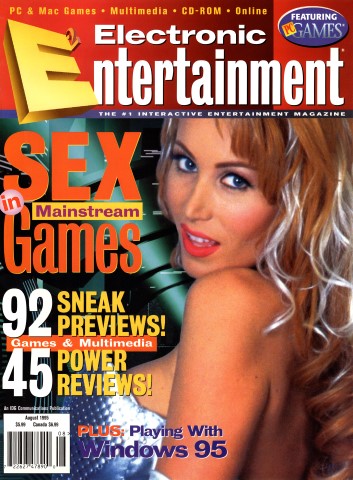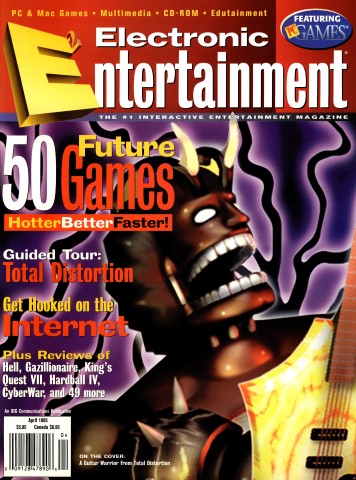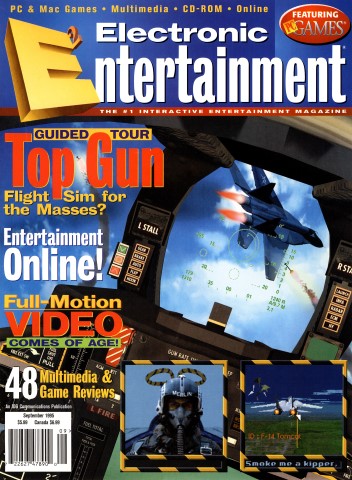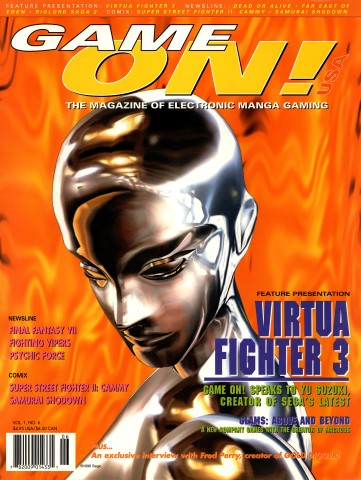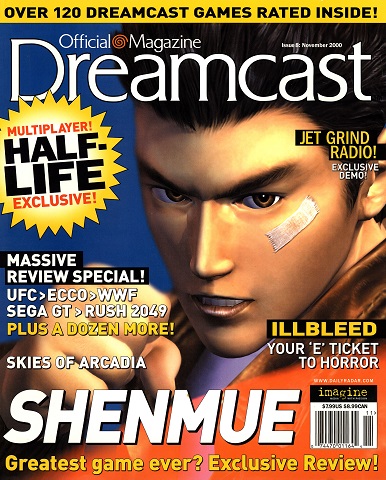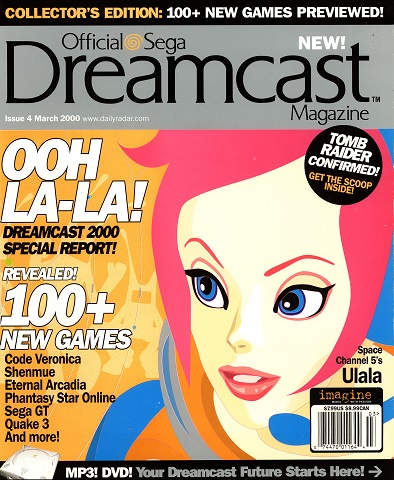-
Posts
1,037 -
Joined
-
Last visited
-
Days Won
102
Content Type
Profiles
Gallery
Downloads
Blogs
Master Index
Video Game Magazines
Video Games
Publications
Strategy Guides
Forums
Store
Everything posted by marktrade
-
-
-
-
GMR 02 Mar 2003 The cover and some of the pages were badly damaged, so I spent quite a bit of time restoring them. Some of the damage is still there but I think I got most or all of what any casual reader would notice.
-
I thought that sounded like an IDG magazine, but I couldn't find it in the IDG magazine index in the back of my Electronic Entertainment issues. I think I confused it with PC World. From what I've been able to find online, PC Home was (at least for a while) published by Paragon Publishing and continued at least until 2005. Did iDG buyout or sell PC Home at some point maybe? http://www.mediaweek.co.uk/article/507195/paragon-launches-two-new-pc-titles http://www.wrx.zen.co.uk/mags/corner.htm
-
I believed very strongly in bringing professional-level attention to game and tech magazine preservation, and lacking professional archivists for so many years, I resolved to teach myself! And I needed equipment that would address the large volume of magazines being forgotten, and a lot of those are large format, so that left very few options. But like I said before, I feel like I'm always cleaning my scanner, since even microscopic amounts of dirt can manifest as long lines on a page. Until today I've always been able to clean it so that it looks pristine but today I noticed one particular speck/line that is not going away. It's extremely small, as small as a speck/line can be and still be noticed at 600 DPI, so I'll keep scanning, but I'll need it professionally serviced eventually. It's still a lot of work. I still have to go through each page before scanning them to make sure they're separate aren't still attached by a small amount of glue. Every now and then a page will glitch and I'll have to rescan it. I still have to open every page in an image editor to crop and align it, sometimes editing out imperfections. I'm not totally convinced that my workflow is more efficient than using a CCD large format flatbed like the Epson Expression 10000XL, but then I've never used one. I just knew that I didn't want to sit at a flatbed all day pulling the cover up, pulling the mag off, turning the page, putting it back, lining it up, putting the cover back down, hitting scan, and waiting. There would be less cropping and aligning involved in post, but I'd rather spend more time at the computer than at the scanner I guess. http://www.amazon.com/Epson-Expression-10000XL-Wide-Format-Graphic/dp/B0002LC9TC/ref=sr_1_7?ie=UTF8&qid=1433569853&sr=8-7&keywords=A3+flatbed+scanner
-
I would guess that A4 flatbeds with CCD or CMOS sensors would handle fluro as well as any Fujitsu that uses CCD, but I can't confirm that. I've read speculation on other forums that the poor reputation flatbeds have with fluro is because their light sources aren't uniformly white (to save energy) and that these flatbed light sources are actually causing different colors to be reflected off the fluro pigment than if you simply observed it in natural light. I can confirm that at least for my A3 flatbed Mustek this is *NOT* the case. After testing it I felt a bit silly, but test it I did. I turned off all the lights late at night, took off the top of the scanner, and in a completely dark room ran the scanner light past the magazine with my iPhone camera running. My CMOS iPhone was detecting the orange perfectly well even under the light of the scanner, but it was coming through the scanner as pink and sickly. I really wanted to believe all that stuff about "48-bit color" but if you don't have good sensors then processing it in 48-bit doesn't mean jack.
-
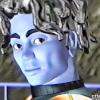
Nintendo Power Issue 1-285 (12 missing)
marktrade replied to Phillyman's topic in Buying, Selling, Trading
With posters! -
Tried my hand at scanning an issue of Computer Gaming World. The paper stock was really thin, like catalog paper. Good thing I had no paper jams or they might have torn right in half! Another strange thing about this mag is that they counted some of the mail inserts as pages in the page numbering. At first I thought I was missing pages but then I realized, "wait a second, that's where an insert was." So I felt obligated to scan them and include them so readers would not think pages are missing. That is cumbersome, though. I have not scanned the mail inserts from other mags, although I haven't thrown them away yet. I know someone somewhere might be interested in them at some point in time but even from an historical perspective I think they're just junk. Ugly, annoying, awkwardly placed junk. But then it was only some of the inserts that were treated as "pages." Computer Gaming World 140 Mar 1996 Of course you can download the official online version for free already at cgwmuseum.org. You can compare my version with theirs at: http://www.cgwmuseum.org/galleries/index.php?year=1996&pub=2&id=140 Although this is my lowest resolution upload so far at 2400 pixels tall, it is still considerably higher than theirs and should also have a drastically reduced number of dirt lines. Worth it, huh?
-
Alright I'm back home from work. I tried to research all this before buying my Fujitsu scanner. I would also be interested in finding a reliable A3 flatbed scanner someday, but I don't have much experience and still wonder if there really is one that justifies the investment. I can at least show you more of what you can expect, if you buy one of those Mustek scanners, though. Here's a comparison image with a scan from my Mustek A3 1200HS on the left with a photo from my iPhone 5s camera on the right, which much more closely resembles the actual appearance. I thought the scan looked colorless at first and thought it just needed tweaking, more saturation maybe or using the "Color Matching Control" feature advertised by Mustek (which had a negligible effect, so negligible I'd consider the example image on their website misleading or false advertising), but none of that worked. The scanner sensors just weren't picking up some colors. Oranges came out looking pink and bright yellows all but disappeared. The large format Mustek scanners all use Contact Imaging Sensors (CIS) which are now a very old technology and I suppose that's why they're inexpensive compared to other large format flatbeds. When digital cameras arrived they used Charge-Coupled Devices (CCD) as sensors which were also used in scanners as an improvement over CIS but they're larger, more power-hungry, and more expensive. The sheetfed scanners that KiwiArcader and I use employ CCDs. Although I did not scan this one, here is an image from a smaller Fujitsu ScanSnap S1500M which also uses CCDs: The iPhone 5s uses more modern CMOS sensors, which are well on their way to replacing CCDs in digital cameras, especially because of burst mode. There are also flatbed scanners that use CMOS but none are large format. Large format flatbed CCD scanners start at something like $1,700 from what I can tell. I have no experience with them. Few people seem to own them which means they usually don't have customer reviews, and the ones I've seen are sort of odd, complaining about uneven surfaces and bevels and I just think, "what a hassle for such an expensive piece of equipment that takes a long time to scan." I wish I could finish this post with a recommendation but my Mustek is a disappointment not just for the colors but for the lines appearing as well. Here's a scan of one of my Electronic Entertainment CDs. It's hard to tell from the thumbnail, but the lines pointed out by the red arrows appear in every scan as slight discoloration. I keep scanning because so far they're small but they only grow worse and more numerous. I try to be as clean as possible. Oh and the software that comes with the Mustek scanners is just awful. Very unreliable and slow, especially the Mac version. At least the Mac software allows you to scan at 1200 DPI. I know you're probably not interested in that, but you should know the WIndows software that comes with it will not let you scan that high, even though that's how it's advertised. That's Mustek for you, I guess.
-
I have the 1200HS and can confirm it is very bad at scanning neon colors. I can show you some example scans when I get home from work late tonight. It also quickly started developing long vertical scan lines which are not fixable without disassembling the scanner. I bought it because I had to test for myself whether 1200 DPI added any benefit and it is impressive when scanning text or line drawings, like those little cartoons of "Max" the mascot for MacAddict. You can then and blow them up really big for desktop art or posters. I also knew that I needed something to scan CDs and CD sleeve covers, and I still use it for that, despite the presence of scan lines. Something is better than nothing.
-
And these databases are very useful! It's hard to say if there were two publications in the US titled "PC Games" or whether both are part of one continuous history. Certainly the second PC Games is continuous with PC Entertainment and Electronic Entertainment but are they all continuous with the first PC Games as well? I think it could be treated either way. Was there a UK edition of PC Games or is that an error?
-
I've been trying to figure out this magazine's history for a while now and I'm sure it'll take much longer, but I thought I'd share what I've found so far and hope this thread elicits more knowledge and research from others. To make matters more confusing "PC Games" is also the title of the most popular PC gaming magazine in Germany from a different publisher. If you search English Wikipedia for PC Games magazine, you'll get the one from Germany. If you search English language game magazines on archive.org you will also get the German magazine, which is not in English. Nothing against Germans but I'm gobsmacked one of their magazines managed to completely eclipse a title in English language searches that was published by IDG, the largest tech/game magazine publisher in the world during the 1990s. IDG also published Gamepro. Everyone's heard of Gamepro but few have heard of PC Games. There isn't even a section for it here at Retromags under USA where it should be (there is under UK with zero issues listed, which makes me wonder if there's yet another magazine called "PC Games" out there). First this column from former Gamepro editor Kevin Gifford, aka Magweasel, which provides a basic outline. http://www.gamesetwatch.com/2010/01/column_game_mag_weaseling_pc_g_1.php PC Games (USA) was first published in August 1988 as a quarterly and focused mainly on reviews. The following year IDG would publish the first issue of Gamepro and in short order IDG created a new office for its game magazines. They shared staff members and according to Gifford they shared a "flashy" airbrushed art style as well. This close association between the two magazines did not last, however, and in 1990 PC Games returned to its own office in a small town across the country, still publishing a handful of issues per year. By 1993 PC Games was publishing 8 issues per year, but at the end of 1993 IDG closed PC Games and created the monthly Electronic Entertainment to fill its place in 1994. This magazine does have a spot on Retromags and I've been scanning a few of them. You'll notice in the upper right corner of the covers of Electronic Entertainment there's a section saying "Featuring PC Games." I kept wondering what that was exactly. It's the logo of the magazine it replaced. Electronic Entertainment covered what it called "the multimedia revolution," the era when CD-ROM drives first became a standard PC component. The space increase from floppy disks to CDs was absolutely enormous. Entertainment software companies piled on images, music, and movies and sold them as multimedia presentations and the "PC game industry" wasn't just about games anymore. Even though it was still basically a gaming magazine, Electronic Entertainment competed with other more general magazines like CD-ROM Today and Multimedia World. At the end of 1995 Electronic Entertainment announced it was changing its name in 1996 to PC Entertainment, reflecting the decline of general purpose multimedia consoles like the 3DO. There's no section for this on Retromags but I have every issue! This new name lasted only five issues and in June 1996 the name was changed "back" to PC Games. At this point Computer Gaming World and PC Gamer were the most popular PC gaming magazines. Despite starting and remaining in third place, PC Games lasted another three years until it was bought by PC Gamer in March 1999. PC Gamer shutdown PC Games unceremoniously and started sending PC Games subscribers issues of PC Gamer. If PC Games subscribers were already subscribed to PC Gamer, they were sent issues of a new magazine called PC Accelerator with the tagline "We read PC Games so you don't have to." This magazine lasted about a year and half and ended in June 2000. There is also no section for this magazine on Retromags. So that's the basic history of PC Games magazine published in the USA. Here's another perspective from gamingmagz.com: http://www.gamingmagz.com/magazines/usa/electronic-entertainment#.VW1tQM7vaqe If you've never heard of PC Games before now, I suppose you can be forgiven. I hadn't even known about its history pre-1997 until a few weeks ago and didn't even know about its history pre-1994 until yesterday! So I guess there's a lot of digging to be done. I fear there's some material here that's been lost forever, forgotten. Even Kevin Gifford's collection, which he donated to the Strong Museum of Play in New York, was missing several issues, some of which I currently own. Still I don't know where else a human being can see what the inside of those early PC Games magazines even look like except at that museum (and only by permission). Same with 1994 issues of Electronic Entertainment. Although I'll be on the lookout.
-
I'm interested, particularly in the issues of Next Generation. Do you happen to have the discs that came with them? I can scan them all but I'd like to see if anyone else is interested. To be honest I've been biting off a little more than I can chew, which is fine with me, but I want to make sure there's some for others!
-
This was the "final" issue of Electronic Entertainment. Starting January 1996 with issue 25 they changed their name to PC Entertainment. This issue was also one of the largest, over 200 pages, so I scaled back the size of the images to 2600 pixels tall so the file size of the CBR would be less than 400 MB. Still big enough to read all of the small text. So far everything I've uploaded has been 2600 or 2800 pixels tall, when I can get away with it. Even that big-ass issue of Next Generation I uploaded last week (over 400 pages) was 2800 but it ended up compressing very well, probably because there is a lot of white space on the review pages. Electronic Entertainment likes to have fading sidebars on top of fading background gradients and images so I guess that's why it doesn't scale as well. Anyways, enjoy! I still have a couple more issues of Electronic Entertainment and will be on the lookout for more. It's a fascinating look back on "the multimedia revolution," the rise and fall of commercial multimedia software in general, and the emergence of gaming as the dominant form of computer entertainment. Electronic Entertainment 24 Dec 1995 Oh and the disc for that issue is in BIN/CUE format this time because it contained audio tracks.
-
I'm sure that print will be on eBay eventually and you won't even have to pay the subscription. BTW, I did enjoy Mad back in the day. I would sometimes get them in the checkout lane at the supermarket, but they disappeared from that venue and other newsstands. I didn't even realize they were still in business.
-
As long as I keep using it. I'd like to put a thousand magazines into this thing. Here's another one: Electronic Entertainment 21 Sep 1995 With disc.
-
It feels like I'm always cleaning it.
-
I just saw WarGames again for the first time in 20 or 25 years and I love how a magazine ad for computer games is basically what starts everything. The power of a magazine, huh? I tried to identify the magazine used in the film and it turns out that not only was it a real magazine but it's been scanned and put online. It was an issue of Creative Computing from September 1982. https://archive.org/details/creativecomputing-1982-09
-
Electronic Entertainment 20 Aug 1995 And disc. https://archive.org/details/E2August1995
-
Thank you so much for the warm welcome, Areala! Here are some more mags: Electronic Entertainment 19 July 1995 With disc! And Game On! 06 October 1996


